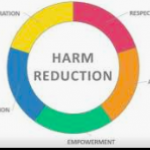Multiple studies have shown that vaping can help smokers give up cigarettes if they want to quit. But research is beginning to show that vaping may actually incentivize smokers to quit, even when they have no plans to stop.
harm reduction
Wanna hear something crazy? Fentanyl test strips are FDA-approved to quickly test for the presence of the dangerous drug in the urine in overdose cases. They can also be used to check for fentanyl in street drugs and counterfeit pills. But in more than 40 states, this is illegal (!). Why? Because they are considered to be drug paraphernalia. Seriously. Good luck finding any policy or law dumber than this.
Given the unabated rise in drug overdoses, the idea of safe injection sites has once again been raised. Dr. Jeffrey Singer of the Cato Institute (and also an advisor for ACSH) writes in the Providence Journal about Rhode Island's “overdose prevention sites.” It's all about harm reduction.
While developments will emerge, right now there’s not much information available about apparent problems at the Taishan nuclear power plant. Let's review what is known, and also consider its background, so we have a fuller context. And here are some educated guesses as to what might happen next.
There is no safe way to inject heroin. Narcan (naloxone) may not save your life. Your friends may not be able to, either.
Like ACSH itself, ACSH advisor Dr. Jeffrey Singer is a proponent of harm reduction. Here's his take on a report, issued by the health and medicine panel of the National Academy of Sciences, Engineering and Medicine (NASEM), titled "Opportunities to Improve Opioid Use Disorder and Infectious Disease Services." Not surprisingly, Dr. Singer calls for needle exchange, methadone use, and the use of prescribing pre‐exposure HIV prophylaxis (PrEP) and post‐exposure prophylaxis (PEP).
One of the core principles of ACSH is harm reduction – an essential component of any sane public health policy. Dr. Jeffrey Singer (pictured) writing for the Cato Institute, calls for harm reduction, both from opioid prescribers and policymakers. Dr. Singer graciously allowed us to reprint his latest essay, which is a must-read.
The CDC says "tobacco use by youth is rising." If that were to be true, it'd be horrible -- but it's not. Cigarette use is down. The only reason the CDC can make this claim is because the agency considers e-cigarettes and vaping devices -- which only contain nicotine -- to be tobacco products. This is misleading and undermines public health.
Cigarette smoking is at an all-time low, and secondhand smoke exposure is also collapsing. So some public health officials have manufactured a new threat: Thirdhand smoke.
Not all vices are equally bad. In a perfect world, our kids never do anything stupid or rebellious. But we don't live in that kind of world, do we? The principle of harm reduction acknowledges that reality, which means that teen vapers are preferable to teen smokers.
First fallacy: the mere existence of an opioid pill is why there is a crisis. Finding solutions requires proper identification of a problem. The time is now for the public narrative to follow suit.
The tale of an eggplant's exit from the body. Always a fun experience!










